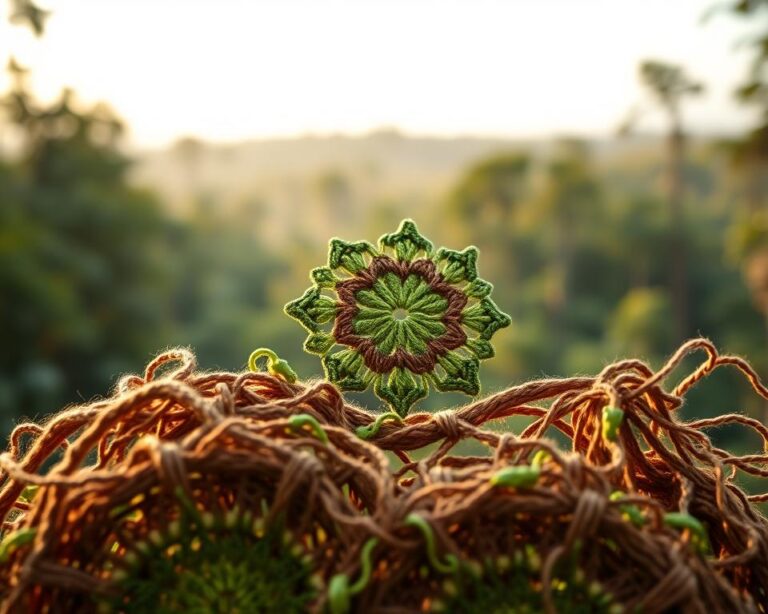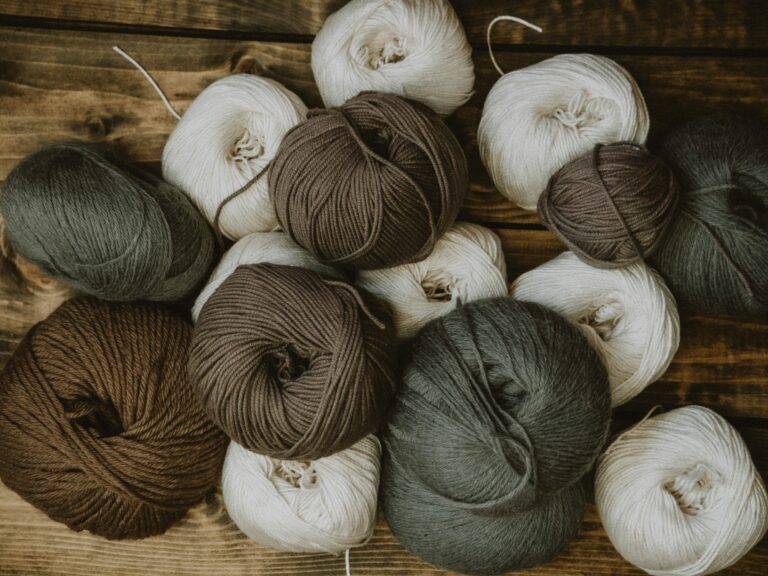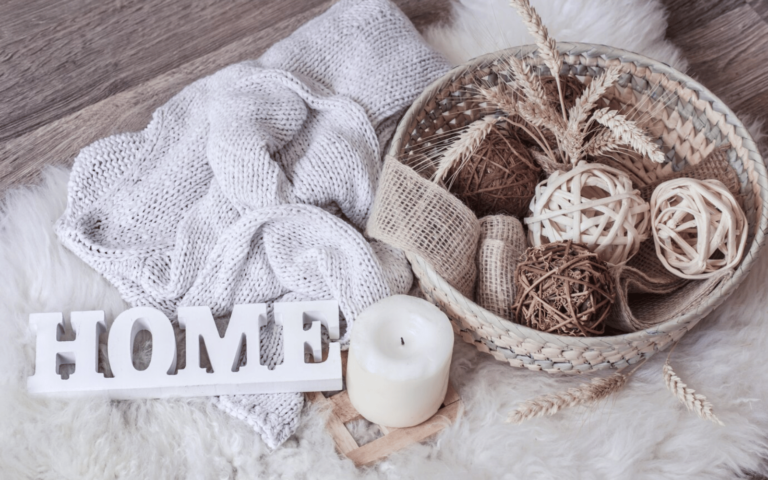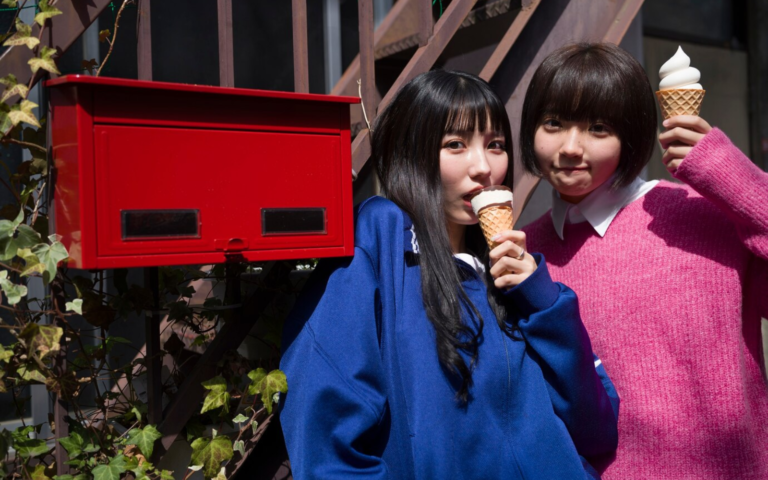Knitting with Multiple Needles: Techniques for Creating Circular and Complex Designs
The art of knitting with multiple needles is an intricate and versatile technique that revolutionizes the traditional flat knitting method. Circular knitting, as the name suggests, involves creating pieces in a round or tubular form rather than in flat panels. This method employs multiple needles, allowing for a continuous and seamless creation of various items, from hats and socks to sweaters and even intricate lace designs. The use of multiple needles, such as double-pointed needles (DPNs), circular needles, and the magic loop method, opens up a world of possibilities for knitters, providing a different approach to crafting diverse and complex designs.
Circular knitting has a rich history that spans across cultures and generations. The technique has evolved, integrating different tools and methods to adapt to the changing landscape of fashion and knitting. Understanding the roots and evolution of these techniques lays the foundation for delving deeper into the nuances and applications of knitting with multiple needles The comprehensive examination of knitting with multiple needles will cover various methods and their unique applications, allowing knitters to gain a thorough understanding of each technique’s strengths and limitations. This guide aims to assist both beginners and experienced knitters in learning circular and complex designs, enabling them to create beautiful, seamless, and professional-quality projects.
Understanding Multiple Needle Knitting
Circular knitting, achieved by using multiple needles, provides an alternative to the conventional back-and-forth motion of flat knitting. The distinct techniques of double-pointed needles (DPNs), the magic loop, and circular needles are pivotal in circular knitting. Each technique offers specific advantages, catering to different projects and individual preferences. DPNs are a traditional method used for smaller, cylindrical items like socks and sleeves. These needles come in sets of four or five, facilitating the division of stitches and working in the round. They allow for the creation of intricate designs and patterns without the use of seams. The magic loop technique, introduced more recently, involves a long circular needle with an extended cable, enabling the knitter to work on small circumferences without the need for multiple sets of needles. This method is highly versatile and adaptable, suitable for various projects, especially those with changing stitch counts.
Circular needles have two needle tips connected by a flexible cable. They are particularly effective for larger, seamless projects like sweaters, shawls, or blankets. The ability to accommodate a larger number of stitches and work in continuous rounds or rows makes circular needles a popular choice among knitters. To embark on the journey of knitting with multiple needles, it’s to understand the diverse tools and materials necessary for a successful project. The selection of needles, yarn, and other essential tools significantly influences the outcome and experience of the knitting process.
Getting Started: Tools and Materials for Multiple Needle Knitting
The range of needle Sorts and materials available, including wood, metal, and plastic, offers different tactile experiences and suitability for various yarn Sorts. Each material has its advantages, such as wooden needles providing grip and warmth, while metal needles offer smoothness and durability. The choice of needle material often depends on personal preference and the Sort of project being undertaken.
Yarn selection is equally important and can dramatically affect the final result of a knitted project. Factors such as fiber content, weight, texture, and color play a significant role in the overall appearance and feel of the finished piece. Understanding the characteristics and compatibility of different yarns with specific needle sizes is essential for achieving the desired outcome. Apart from needles and yarn, other tools, including stitch markers, tapestry needles, and row counters, aid in the smooth execution of circular knitting. These tools help in keeping track of the intricate patterns and maintaining accuracy throughout the project.
Understanding Double-Pointed Needles (DPNs)
The utilization of double-pointed needles (DPNs) in circular knitting requires familiarity with specific techniques and strategies to efficiently manage these needles. The intricate process of casting on and joining stitches in the round with DPNs necessitates an understanding of various methods like the long-tail cast-on or the figure-eight cast-on, which ensures a seamless start to the project.
Managing and avoiding laddering, a common challenge when working with DPNs, demands attention to tension and stitch manipulation. Knitters must learn to distribute their tension evenly across the needles to avoid unsightly gaps between stitches. DPNs are commonly used for shaping and decreasing in patterns to achieve various designs such as hats, gloves, or socks. Techniques like shaping through evenly spaced decreases or increases help in creating curves and intricate shapes while maintaining the consistency of the fabric.
Examining the Magic Loop Technique
The magic loop method is a versatile and adaptable technique that offers an alternative to using multiple sets of DPNs for small circumference knitting. Utilizing a single long circular needle with a flexible cable, this method enables the creation of hats, socks, or sleeves with ease. The process of the magic loop involves dividing the stitches into two sections, allowing one section to be held on the cable while knitting the other section. The continuous loop of the cable facilitates working in a small circumference without the need to switch to shorter needles.
A common challenge faced by knitters using the magic loop method is the of creating unintentional ladders or gaps between the two sections of stitches. To avoid this, maintaining even tension and slightly readjusting the needle position at the transition point can help mitigate laddering. Adaptability is a significant advantage of the magic loop method, allowing for the creation of varying circumferences without the need to switch needles. This technique accommodates different projects and stitch counts, making it an invaluable skill for knitters seeking versatility and efficiency.
The Versatility of Circular Needles
Circular needles, with their dual needle tips connected by a flexible cable, are highly versatile and adaptable tools for knitting in the round or flat. The ability to accommodate a larger number of stitches and work in continuous rounds or rows makes circular needles a popular choice among knitters. The seamless construction enabled by circular needles is particularly advantageous for larger projects like sweaters, shawls, or blankets. The absence of seams contributes to the overall aesthetic appeal and comfort of the finished piece.
Circular needles come in various lengths and materials, catering to different projects and preferences. The choice of cable length plays a role in the ease of handling the stitches, with longer cables accommodating a larger number of stitches and shorter cables facilitating smaller circumferences. Knitting in the round with circular needles allows for a wide range of possibilities, from simple stockinette stitch patterns to intricate lace or cables. The ability to work on both right and wrong sides of the fabric without turning the work offers convenience and versatility, making circular needles a valuable asset in a knitter’s toolkit.
Advanced Techniques in Multiple Needle Knitting
Shaping and designing complex patterns in circular knitting require a comprehensive understanding of advanced techniques. Incorporating techniques such as increases, decreases, and short rows enables the creation of intricate and multidimensional designs. Creating shaping through increases, such as knitting into the front and back of a stitch (kfb) or yarn overs, allows for the expansion and shaping of the fabric. Similarly, decreases like knit two together (k2tog) or slip, slip, knit (ssk) aid in reducing stitches and shaping the fabric.
Cables, lace, and colorwork present additional challenges and opportunities for advanced circular knitting. Implementing these techniques in the round requires attention to stitch count, tension, and pattern repetition to achieve flawless and symmetrical designs. Managing large and intricate projects demands strategies for keeping track of stitch counts and maintaining a clear understanding of the pattern instructions. Techniques such as using stitch markers, row counters, and keeping detailed notes can assist in managing complex designs and patterns effectively.
Troubleshooting and Tips for Complex Designs
In the realm of circular knitting with multiple needles, certain challenges may arise, demanding troubleshooting and effective solutions. Common issues like twisted stitches, dropped stitches, or tangled cables can disrupt the flow of a project, emphasizing the need for swift and practical solutions. Maintaining a consistent tension and gauge throughout a project is fundamental to achieving a professional finish. Fluctuations in tension can result in uneven stitches or changes in fabric drape, affecting the overall look of the piece. Blocking and finishing techniques play a significant role in the final presentation of a knitted project. Proper blocking helps in shaping and defining the stitches, ensuring a polished and refined appearance. Techniques like wet blocking or steam blocking can be employed, depending on the yarn and the intended result.
Creativity and Innovation in Circular Knitting
Designing unique and customized circular projects opens the doors to creativity and innovation in knitting. Delving into original patterns and incorporating personal touches into designs allow for the creation of bespoke items. The utilization of multiple needle techniques provides the freedom to experiment with diverse stitch patterns, textures, and color combinations. This creative freedom enables knitters to push the boundaries of traditional patterns, infusing their creations with unique and personalized elements.
Drawing inspiration from various sources, such as nature, architecture, or cultural motifs, can fuel creativity and innovation. Knitters can find design elements and motifs that resonate with them, adapting these inspirations into their knitting projects. Utilizing available resources like knitting books, online tutorials, or knitting communities can further enhance one’s creativity and innovation in circular knitting. Sharing ideas, seeking advice, and participating in workshops or forums can stimulate creativity and provide valuable insights into the craft.
Adapting Stitches and Patterns for Multiple Needle Knitting
Adapting various stitch patterns for circular knitting with multiple needles requires an understanding of the stitch’s structure and how it will translate in the round. Techniques such as converting flat stitch patterns to circular formats demand adjustments in stitch counts and transitions to ensure the pattern flows seamlessly. Different stitch patterns may present unique challenges when transitioning from flat to circular knitting. Patterns with varying stitch multiples or those reliant on directional knitting can necessitate modifications to accommodate circular knitting. For instance, patterns with strong right-side and wrong-side rows may need adjustments for circular knitting, ensuring the design maintains its integrity.
Advanced stitch patterns such as cables, lace, and colorwork often require careful consideration when translating them into circular knitting. Proper planning and ensuring the continuity of intricate designs across rounds are essential to achieve uniform and aesthetically pleasing results. Going into stitch and pattern modifications tailored for circular knitting with multiple needles provides knitters with the opportunity to expand their repertoire and enhance their creativity. Understanding the nuances of adjusting flat patterns to circular formats fortify knitters to produce seamless, beautifully crafted designs.
The Influence of Circular Knitting in Modern Fiber Arts
The impact of circular knitting techniques with multiple needles has extended beyond traditional knitting practices, influencing contemporary fiber arts and textile designs. These techniques have contributed significantly to the innovation and evolution of knitting in the modern era. The versatility and seamlessness of circular knitting have been embraced by designers in various fields. It has paved the way for creating intricate and sculptural pieces, adding depth and dimension to textile art. Artists use these techniques to create wall hangings, sculptural installations, and three-dimensional pieces, showcasing the adaptability and creativity of circular knitting beyond traditional wearables.
The influence of circular knitting techniques has extended into fashion, where designers incorporate circular knitting methods to create avant-garde and innovative garments. Seamless and visually striking designs are achievable through circular knitting, enabling the creation of garments with unique silhouettes and structural elements. Furthermore, the advent of technology has expanded the reach of circular knitting techniques, with the use of computer-aided design and knitting machines. These advancements have facilitated the creation of intricate, high-tech textiles, bridging the gap between traditional craftsmanship and modern innovation. Circular knitting with multiple needles continues to influence contemporary fiber arts, pushing the boundaries of what is achievable in textile design. As designers and artists dig into and experiment with these techniques, circular knitting remains at the forefront of innovative and cutting-edge creations in the ever-evolving landscape of modern fiber arts.
Simplifying Patterns for Beginners in Multiple Needle Knitting
Knitting is a practice that often involves layers of complexity and skill, particularly when working with multiple needles to achieve circular or intricate designs. For beginners, mastering the basics of this craft can seem daunting. However, the joy of knitting and the beauty of its results are accessible even to those new to the craft, provided they start with simplified patterns and gradual learning steps. This segment of our discussion focuses on breaking down complex designs into manageable steps, offering guidance for newcomers eager to dive into the world of knitting with multiple needles.
The first step for any novice is to understand the structure of basic stitches and how they translate into circular knitting. Simple projects, such as creating coasters, hats, or wrist warmers, can serve as perfect entry points. These items typically require minimal stitching adjustments and provide a solid foundation for understanding how stitches form circles and tubes without requiring the manipulation of intricate patterns or multiple color changes.
Next, selecting the right materials is crucial. For beginners, using larger needles and thicker yarn can make the process easier to handle. The stitches are more visible and easier to count, and the progress is quicker, providing a satisfying sense of accomplishment that boosts confidence. Acrylic yarns can be a good choice for those just starting out because they are generally less expensive, durable, and easy to work with. As skills advance, transitioning to different types of yarns, such as wool or cotton, which might require more delicate handling, becomes smoother.
The method of casting on is also key in circular knitting. There are several techniques suitable for beginners, such as the simple loop method, which is not only straightforward but also sets the foundation for more complex cast-on methods used in advanced knitting. Practicing this will prepare the knitter for eventual progression to techniques like the long-tail cast-on or the more specialized German twisted cast-on, which are preferred for their elasticity and strength in projects requiring a snug fit, like socks or mittens.
Once the basics are mastered, the new knitter can begin small projects that introduce additional needles one at a time. For instance, starting with two circular needles can help in understanding the mechanics of handling multiple needles without overwhelming with the full set used in more complex projects. This step-by-step approach demystifies the process and reduces the likelihood of dropped stitches or other common mistakes.
Moreover, video tutorials and knitting circles are invaluable resources. Visual learning can help clarify the processes that written patterns may not fully capture, especially when it comes to understanding the spatial aspects of circular knitting. Joining a knitting group or following online forums can also provide support, answer questions, and offer tips that are not readily available in books or formal patterns.
Additionally, keeping a knitting journal can be a beneficial practice for beginners. Documenting the start and completion dates of projects, notes on the yarn used, needle size, and any difficulties encountered along the way can serve as a practical reference and a motivational tool. Seeing one’s progress catalogued over time can be incredibly rewarding and encouraging.
In summary, while the art of knitting with multiple needles might initially appear complex, it is by no means beyond the reach of a determined beginner. By starting with simple projects, choosing the right materials, and utilizing resources like tutorials and community support, any novice can gradually build their skills. This foundation not only enables the creation of beautiful, handmade items but also opens the door to exploring more complex patterns and techniques in the future. With patience and practice, the intricate world of multiple needle knitting becomes not just accessible, but a source of endless creative pleasure.
Outcome: Embracing the Artistry of Circular and Complex Designs
The realm of knitting with multiple needles offers a rich tapestry of techniques, possibilities, and artistry. From learning the fundamentals to delving into the complexities of shaping and intricate designs, circular knitting opens a world of creativity and innovation for knitters of all levels. Understanding the diverse techniques of double-pointed needles, the magic loop, and circular needles allows knitters to expand their skill set and approach projects with confidence. Troubleshooting challenges, maintaining tension, and employing advanced techniques contribute to honing skills and producing professional-quality knitted items.
Embracing the artistry of circular and complex designs in knitting allows for the creation of unique, seamless, and beautifully crafted pieces. By looking into the diverse techniques, troubleshooting challenges, and tapping into creativity and innovation, knitters can elevate their craft and create stunning, personalized works of art. Circular knitting with multiple needles presents an ever-evolving journey that enriches the creative spirit and enables knitters to weave intricate stories with every stitch.







